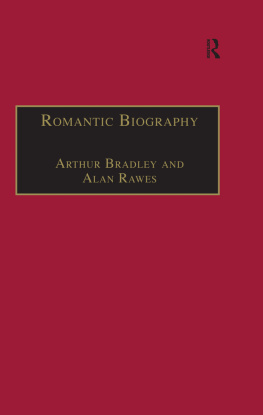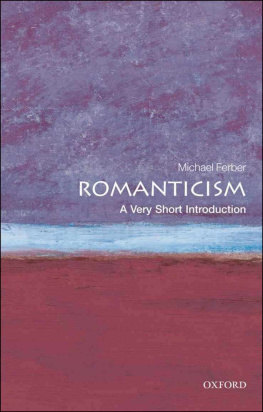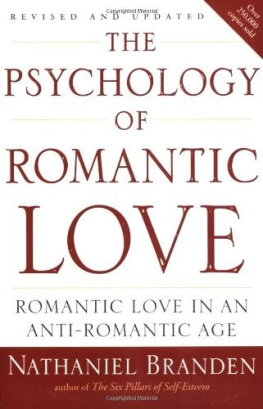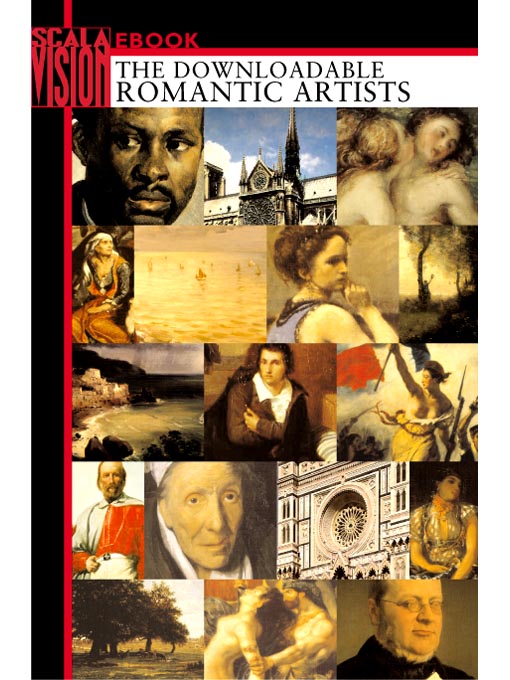THE ROMANTIC ARTISTS
John Constable
(17761837)
English painter. The son of a miller, he was raised in Suffolk on the banks of the river Stour, where he was born and spent most of his life. In 1799 he went to London to attend courses at the Royal Academy, making a particularly keen study of classical landscape painters like Claude Lorrain and Nicolas Poussin, as well as the seventeenth-century Dutch artists and, among British painters, Richard Wilson and Thomas Gainsborough.
In 1820, spurred on by his desire to break with the classical tradition and develop a new approach to landscape painting, he returned to his native village to paint nature with the aim of representing it as objectively as possible. By doing this Constable took a decisive step toward a naturalistic depiction of the landscape, which would be taken further with the artists of the Barbizon School a few decades later.
From this moment on Constable devoted himself assiduously to painting the English countryside, representing it as it appeared under different conditions of weather and light. In 1804 he started to paint in watercolor as well as oil, obtaining effects of great naturalness in his rendering of atmospheric phenomena. In 1806 he went back to Suffolk, carrying on his intense activity of painting from life and making vain attempts to get his work recognized by the Royal Academy in London.
He often painted pictures of the same places, returning to a subject after many years. He produced numerous views of Hampstead Heath and Salisbury Cathedral (Salisbury Cathedral, 1820, London, Nat. Gall.). His native Suffolk was a particularly fertile source of inspiration to which some of his best paintings are devotedFlatford Mill (1817, Tate Gall.), The Haywain (1821, London, Nat. Gall.), Jumping Horse (1825, London, Royal Acad.), or Dedham Vale (1802, London, Victoria and Albert Mus., replicated in 1828, Edinburgh, Nat. Gall. of Scotland). These pictures were almost always the fruit of a long process of preparation, starting out with small sketches and moving on to full-scale ones before the careful execution of the painting itself. Between 1821 and 1822 he made a series of studies of clouds, noting the time and date of execution and, sometimes, the weather and wind conditions on the back of each.
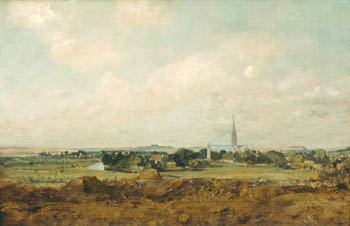
John Constable,
Salisbury Cathedral, 1820, study in oils, National Gallery, London.
In 1828 Constable was at last admitted to the Royal Academy, but the death of his wife in the same year cast him into a state of deep depression from which he never fully recovered. The crisis he went through in the last years of his life is reflected in the dark tones of the works from that period (The Valley Farm, 1835, London, Tate Gall.). From 1833 onward Constable taught at the Royal Academy; the texts of the lectures he gave on the history of landscape painting are an invaluable aid to an understanding of his conception of the genre.
Unlike that of Joseph Mallord William Turner, Constables work encountered resistance and perplexity in Britain. In France, however, it exercised a profound influence on Eugne Delacroix and other Romantic artists, inducing them to paint in a freer manner, and was a fundamental point of reference for the painters of the Barbizon School.
Jean-Baptiste-Camille Corot
(17961875)
French painter. Raised in a family of wealthy merchants, Jean-Baptiste-Camille Corot began his apprenticeship as a pupil of Michallon and then Bertin, landscape painters in the classical style, who initiated him into painting from nature. In 1825 he left for Italy, where he stayed for three years.
During this first visit to Italy the painter did not devote himself to the study of the old masters, but chose to paint plein air views of Rome with a modern immediacy. His enthusiasm for the clear light of the Mediterranean prompted Corot to conduct research into the values of light and color, which he rendered with a thick brushstroke and a very light palette (The Coliseum Seen from the Arches of Constantines Basilica, 1825, Paris, Louvre; Castel SantAngelo in Rome, 182628, Paris, Louvre; Narni Bridge, 1827, Paris, Louvre). On his return to Paris, however, these pictures were not shown to the public. Thus Corot began the "double life" that was to characterize the rest of his career, in which he separated his official output, made up of landscapes in the classical manner peopled with nymphs and shepherds (A Morning: Dance of Nymphs, ca. 1850, Paris, Louvre) from his private production of views and landscapes that were free of any reference to tradition or academic rules.
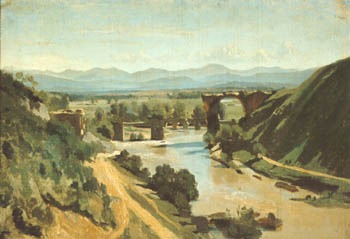
Jean-Baptiste-Camille Corot,
Narni Bridge, 1827, oil on canvas, Louvre, Paris.
After a few years moving between Paris and the Forest of Fontainebleau, where he worked in contact with the painters of the Barbizon School, along with frequent excursions to the provinces (Chartres Cathedral, 1830, Paris, Louvre), he returned to Italy in 1834, painting luminous sketches of the places he visited on his journeys to Florence, Genoa, Venice, and the lakes of Lombardy (The Grand Canal Viewed from the Campo della Carit, 1834, Paris, private. coll.; The City and Lake of Como, 1834, Paris, private coll.). In 1843 a third visit took him to Turin, Genoa, and Rome and its surroundings, providing the occasion for other surprising pictorial impressions (Tivoli, the Gardens of the Villa dEste, 1843, Paris, Louvre; Marietta, Roman Odalisque, 1843, Paris, Petit Palais). In the meantime he had achieved public renown and began to obtain the first official recognition of his merits, culminating in the acquisition of one of his paintings by Napoleon III at the 1855 Universal Exhibition in Paris.
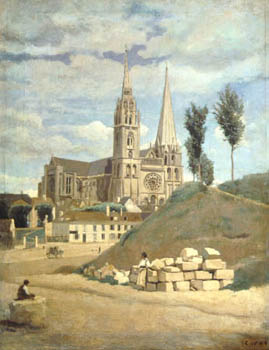
Jean-Baptiste-Camille Corot,
Chartres Cathedral, 1830, Louvre, Paris.
The artist continued his pictorial wanderings until his death, using the same open-minded approach in the representation of both landscapes and figures (The Woman in Blue, 1874, Paris, Louvre), breaking out of the stylistic mold of his time, and creating a manner free of schemes and founded on an untiring investigation in the qualities of tone and light. Combined with the freshness of his palette, it is this new sensitivity that makes Corots painting the forerunner of impressionist experimentation.
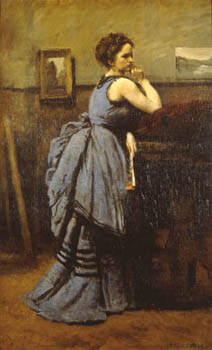
Jean-Baptiste-Camille Corot,
The Woman in Blue, 1874, oil on canvas, Louvre, Paris.
A Morning: Dance of Nymphs
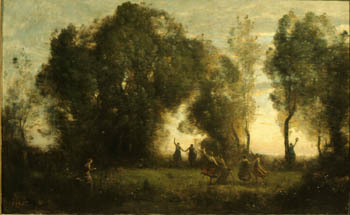
Jean-Baptiste-Camille Corot,
A Morning: Dance of Nymphs, ca. 1850, oil on canvas, Louvre, Paris.
The fascinating views that Jean-Baptiste-Camille Corot painted from the time of his first visit to Italy presented such a new and personal interpretation of nature and the landscape that the painter refused to display them at official events until around the middle of the century. Instead Corot sent large landscapes with heroic or mythological themes to the exhibitions. While still representing a new approach to the historical landscape, these more traditional works were couched in a clearly defined and almost elegiac atmosphere.





